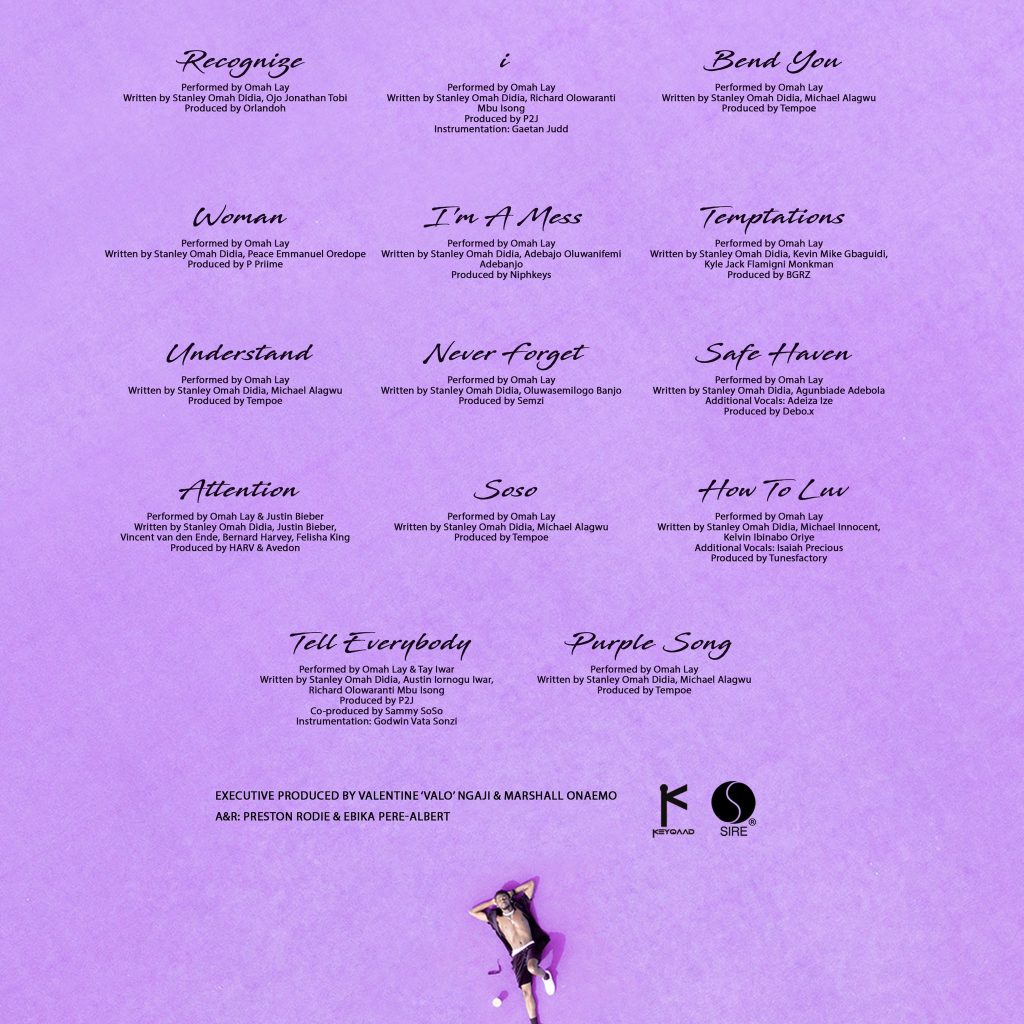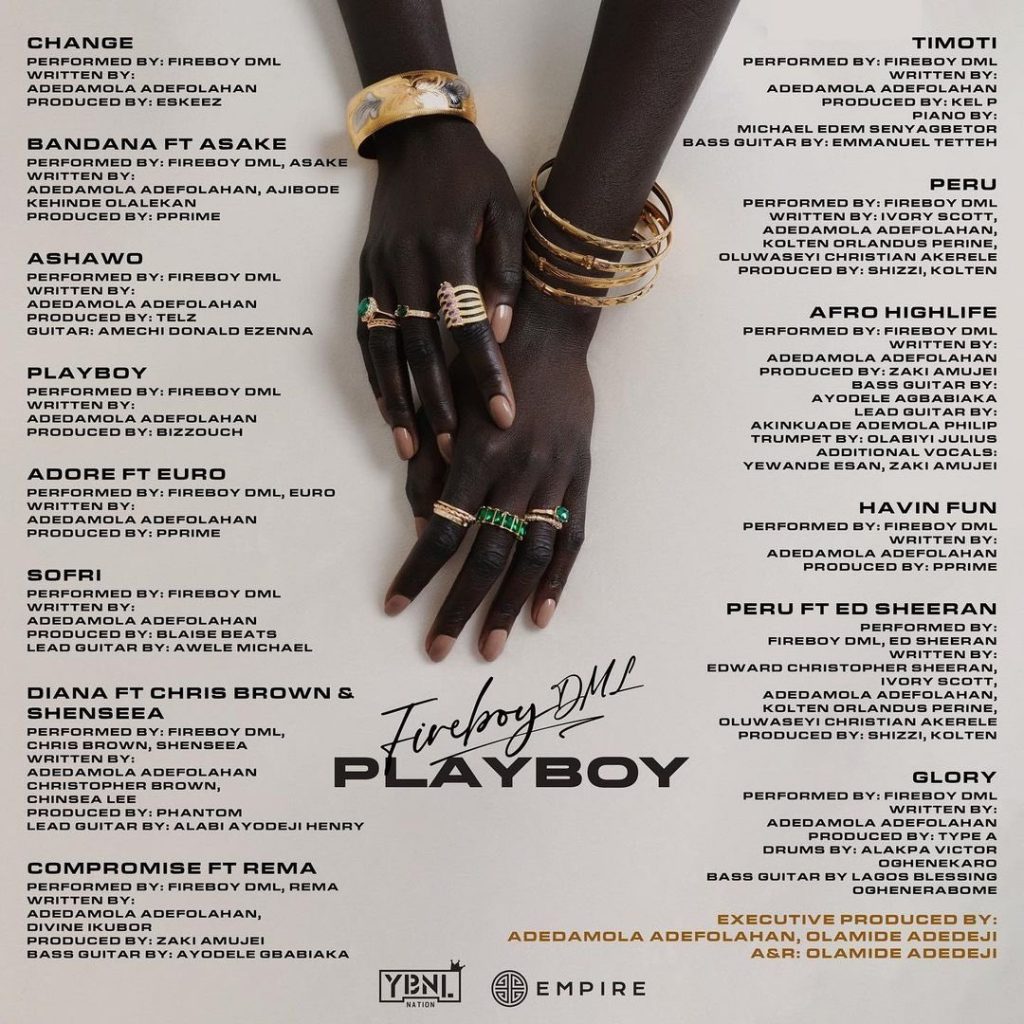Unlike the previous decade where there were sparse releases of albums from A-list artists and premier labels—since the turn of the new one however, there has been a manic insurgence of albums and the industry has once again, gone back to being an album market, since the eras of CD’s and mobile Mp3 players. Now we’re in the streaming era and music is more accessible through DSP’s that have millions of songs in their libraries.
Social media has also fostered discourse and incessant comparison around albums and their inherent quality. Unfortunately, the huge chunk of this conversation is spearheaded with stan bias and non-objective sentiments and so the points iterated are hardly valid and hold any salt. This only makes the need to define the parameters and metrics that make a great album, more paramount than ever.
Before identifying the key metrics, let’s first of all debunk some fake theories as to what makes a great album. Some people would strongly opine that the greatness of an album lies in its ability to produce hits that would dominate the charts. For some, great albums rack up the highest streaming numbers and make the most playlists. And for some, it’s the variety of sound and diversity of sonics that can be found in the body of work. While each of these are valid arguments for what a great album can achieve, it’s not the sole determinant of the greatness. The greatness is still in the music itself.

An album is supposed to be an experience. That’s why albums are specifically differentiated from playlists and mixtapes. Playlists are curated with the intention to showcase a plethora of sounds that’s affiliated to a genre, mood or trend. Mixtapes on the other hand are simply collections of songs, that may or may not have diversity in their sonics. Albums though are supposed to feel like movies. With an inception, slowly building up to a climax and an eventual resolution.
The art of what a great album entails isn’t lost only on stans, but sadly some of our A-list artists also. So the question beckons once again, what makes a great album?
There are five key metrics that an album must tick, before it should be termed as an overall great project and they are;
- Sonic cohesion.
- Unharried transitions.
- Expansive & pristine production.
- Adequate song writing.
- Topical progression/optimal track sequencing.
We’d be breaking down each point one by one, with practical examples of popular albums, to ensure readers can relate.
1. Sonic Cohesion
This is the quality of an album to have songs, that feel cut from the same sonic clothe, so that they have a unifying theme across vocals and production. An album having great sonic cohesion helps to enliven the experience and make the project more wholesome, by promoting a one-ness feel. Great artists understand how crucial album cohesion is and that’s why some of them opt for one producer or two—that are on the same wavelength—to produce the entirety of the project.
Examples are: P-Prime on Asa’s V & Olamide’s Carpe Diem, Pheelz & Type A on Fireboy DML’s Apollo, London & Andrebeatz on Rema’s Rave & Roses and Ayra Starr’s 19 & Dangerous, Kukbeats on Ruger’s EP’s and most recently Magicsticks on Asake’s Mr. Money With The Vibe. The sonic cohesion is achieved by implementing certain principles in the production of the songs, that may include using similar riffs, chords and percussions across board—in a way that it’s not monotonous and each song still retains it’s own fresh, distinct sound whilst feeling like a piece of an artwork, alongside the other songs.
Great sonic cohesion can still be achieved even when there are numerous producers on the project. A perfect example is Omah Lay’s Boy Alone which is one of the best pop albums out this year and has superb sonic cohesion. Despite there being more than ten producers on the project, the sonic cohesion is still prominent and that’s a testament to the work of the A&R on the project and Omah Lay’s vision also.

2. Unharried Transitions
It is very important that the transition from one song to the next on an album doesn’t feel rushed, inorganic or harried. Why? It takes away from the overarching experience, when the transition isn’t pleasant because it reminds the listener that a transition has happened and a new song is being played. The greatest of albums have transitions so seamless, it almost goes unnoticed when a song switch happens because the listener would be that immersed in the rewarding experience.
One of the best transitions I’ve heard on a Nigerian project, this year is on Rema’s Rave & Roses in the segue from track 1, Divine to track 2, Hold Me. The instrumentals in the final seconds of Divine are so eclectic that it feels like a cinematic sequence and it smoothly bleeds into the opening seconds of Hold Me in a way that the switch goes unnoticed. This album does have its shortcomings in many ways, but where transitions and even sonic cohesion is concerned—it really excels.

Of course, not every album is going to have a transition so smooth. Does that now handicap the quality and prevent it from being a great experience? Nope. That’s why the name of this metric is ‘unharried’ and not seamless because this writer understands that it’s not that simple, especially for some albums that aim to showcase a wide variety of sounds. It won’t be so easy to fuse sonics of such album, and forcing a seamless transition—one that doesn’t work for the music—is anticlimactic. That’s why the bare minimum is an unharried transition. If it can’t be seamless, then it shouldn’t be forced either.
3. Expansive & Pristine Production
Earlier on, I made a point that some artists opt for one or two producers, just to ensure the cohesion of the album. On the other hand of that decision spectrum, some artists go for numerous producers to ensure expansive and pristine production. It only makes sense since different producers have their different strengths, so imploring the services of multiple ones would promote range and diversity in sounds, which would help make the overall experience more enjoyable, as compared to it being monotonous.
However, the over indulgence of variety could impair the album’s cohesion and so it is indeed a very delicate line to thread. Fireboy DML’s Playboy is an album that excels in this metric to a commendable extent. Unlike his previous albums that had less producers and were more sonically cohesive as a result of that, Playboy aims to be a diverse showcase of sounds and it worked well in enriching the album’s quality. Granted, it was not the most cohesive project but the songs never felt disjointed either or the transitions, harried.

At this point, I expect the reader to have noticed how each metric bleeds into the other and how they’re all interwoven in the grand scheme of things. Let’s push on.
4. Adequate Songwriting
Simply put, for an album to be great—it needs songwriting that’s adequate and executes properly. It doesn’t need to be the most technical and divergent of writings, but just optimal enough and serviceable to the songs, while also being appropriate to the genre in question. For example, a pop song shouldn’t have the deepest of philosophical lyrics. It’s a feel good genre that’s supposed to be enjoyable and groovy, first and foremost. Songwriting that would impede that, no matter how impressive, doesn’t work for it.
The R&B genre could have more empirical songwriting, as its crux is mostly related to love stories, whilst of course Hip-Hop should have more impressive songwriting structure overall, because the beauty lies in the bars, punchlines, double/triple entendres, comical analogies, tight rhyme schemes and so on and so forth. Great songwriting should also be layered, such that songs of the same genre—aren’t attacked the same way in flows and rhymes.
Boy Alone and Bnxn’s Bad Since ’97’ has some of the most impressive songwriting this year, in terms of sheer technicality. Fireboy DML’s style in Playboy is more simplistic, but equally profound with more heartfelt and tight rhyme schemes. Asake’s MMWTV also has impressive songwriting that’s not the most revolutionary, but executes it intent adequately well.

At the end of the day, great music is about feel good vibes brought about by pleasant harmonics. Simple songwriting plus great sonics & melodies would always trump, great songwriting plus subpar sonics & melodies. Don’t get me wrong, some of the greatest albums have exceptional songwriting and every artist should strive for that. But there is no use for such writing when it isn’t serviceable in context to the songs, or when it’s prioritized higher over other more crucial things.
5. Topical Progression/Optimal Track Sequencing
First of all, what is topical progression? It is simply the inherent quality of an album to have a track by track progression, that makes sense topically and isn’t scatter brained. For example, it doesn’t make much sense for an album opener to have themes pertaining to the artist defying all odds and coming out strong, and in the second track, they’re already talking about cowering under pressure.
The topics are not exactly coherent to each other, because for anyone to go from feeling exultant and powerful, to cowering under pressure, there has to be some journey somewhat and that’s the bread and butter of this metric. The journey has to be plausible and not contrived.
Not every album is going to tell a linear, clear cut story like a novel. Some albums are so multi-faceted and complex, that multiple stories and interpretations can be drawn from them. Whilst some don’t really set out to tell a story, at all and just have a faint progression of topics. No matter the case it is, the topical progression should make sense and be smooth. This is where the ensuing, simultaneous point of optimal track sequencing comes in.
A great album has optimal track sequencing in the sense that the topics align topically and even sonically with one another, in the way it is arranged from opening song to closing song. This is one of the major factors that distinguishes an album from a mixtape or a playlist, that are usually just a collection of loosely related songs. A great album has a track sequencing that’s so good, that the pre-released singles make even more sense when they’re played alongside the rest of the album.
I’d have to cite Omah Lay’s Boy Alone once again, because it does this incredibly well. The pre-released singles were Understand, Attention & Woman. At first glance, there is hardly anything unifying the topics of this song together. Understand is a premium heartbreak song, where the singer is crooning about the woes of betrayal and being played. Attention is more of a call-to-arms, a plea beckon to a lover to heed their request and give said attention. Whilst Woman is the typical pop song, professing love and commitment, peppered with some sexual anecdotes.
However on the album, the songs are arranged in a way that their themes make even more sense, when heard as parts of the project. Woman comes off the heels of Bend You, another song infused with sexual analogies and helps to bolster the narrative of pleasing one’s lover. Understand comes after Temptations, a song that tackles the vices of remaining committed amongst distractions and temptations, so it makes topical sense to go from there—to clamouring about being betrayed and pondering about an unrequited commitment on Understand. Attention comes after Safe Haven, a song that emphasizes the importance of finding comfort and heaven in someone’s lover, and so asking for Attention to seek that haven afterwards is serviceable.

Albums that execute the aforementioned parameters so well, are classics upon arrival. While some albums gain their classic status over time, as a result of their longevity and inherent quality also. It is a fact though, that an album ticking all the required boxes promotes its longevity and replay value, because it executes a great listening experience to a top notch value.

Over time, some albums have been christened classics as a result of their impact. Wizkid’s Made In Lagos being the quintessential example. The project is a good album that has indeed aged like fine wine, however it isn’t exactly ‘classic on arrival’ quality. The assertion of this point doesn’t mean the album’s classic status isn’t merited. It simply means the parameters that defines a classic album has become much more nuanced these days. As so is almost any talk that defines a great album.
This article is written by T.J. Martins, an Album Talks’ writer and it doesn’t reflect the opinion of the entire publication across board.






Now this is the stuff.
It helps a non-music critic understand and appreciate the stakes. I’d say it’s a laudable guide to an accurate objective review to musical productions.
With the metrics listed, now I know what to look out for if that conversation was started and I can hold my ground with facts.
It’s simply brilliant.
The deft distinction between playlists, mixtapes and albums is insightful. Made me go, “ohhhhhhhh” then I just had to keep reading. I only used to enjoy music but with all this behind-the-scenes knowledge, I appreciate it even more.
Thank you for this. I hope to see more of this.
coursework on resume coursework buy uk coursework translate https://courseworkninja.com/
narrative coursework examples coursework essay course work hero https://brainycoursework.com/
best online dating free online personals dating free online https://datingwebsiteshopper.com/
internet dating match dating 100% inspektion https://freedatinglive.com/
dating online fdating free single dating service https://onlinedatinghunks.com/
online free dating sites free dating sites for single men and women free online dating sites with no fees https://freewebdating.net/
dating chat free free datings site local personal ads https://allaboutdatingsites.com/
single website singles chat free foreign dating sites free no fee https://jewish-dating-online.net/
dating site sign up dating site free dating sight https://onlinedatingsurvey.com/
singles near me n dating site best free date sites https://sexanddatingonline.com/
plenty of fish sign in meet singles online 100 free
chat and dating for adults free https://free-dating-sites-free-personals.com/
free free dating sites meet women free chat free
dating site https://onlinedatingsuccessguide.com/
best essay writers review college essay writers block hire someone to write my essay https://geniusessaywriters.net/
college essay help online essay about service us essay writing services https://writemyessaycheap24h.com/
reviews for essay writing services what can i write my
essay on essay editing service online https://besteasyessays.org/
top essay editing service what are the best essay writing services college essays writing
services https://buyacademicessay.com/
medical school essay help essay writing services us someone write my essay https://cheapessaywritingservice1.com/
professional essay writers write my essay for me cheap fake essay writer https://bestsessays.org/
custom essays cheap essay paper writing services write my history essay for me https://lawessayhelpinlondon.com/
best essay website need help to write an essay custom essay writing service org https://buy-eessay-online.com/
which is the best essay writing service cheap custom essays can someone
write my essay https://bestessaysden.com/
custom college essay writing service buy cheap essay online cheap
essay buy https://howtobuyanessay.com/
fast custom essays best mba essay writing service college admission essay editing services https://au-bestessays.org/
help writing an essay scholarship essay writing service essay writer service review https://bestessayreviews.net/
buy an essay cheap legit essay writing services buy an essay online https://customcollegeessays.net/
academic essay writers buy college essays online english essay writing service https://bestcampusessays.com/
essays on the movie the help college essay services assignment essay help https://customessaywritingserviceonline.com/
website for essay writing help write essay online custom essays services https://essay-writing-helper.com/
essay writing services scams write my essay for money buy an essay online cheap https://servicessay.com/
write my college essay me buy essays online cheap good essay writing website https://ratedessaywriters.com/
top 5 essay writing services essay writers canada need help with essay https://cheapessaypapers.org/
pay for essay writing essay writing services usa who will write my essay for me https://best-essay-shop.com/
are essay writing services legal essay services reviews best essays https://bestcollegeessays.org/
best online essay writing services mba essay
editing service easy essay writer https://essays-writings-service-online.com/
write my college essay can t write my essay i need help
writing a descriptive essay https://express-essay-writer.com/